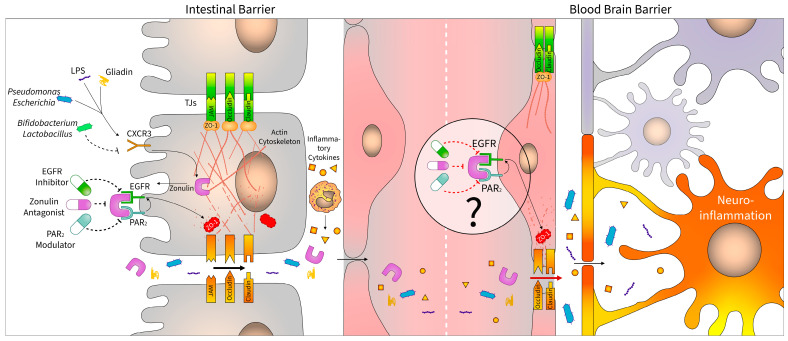Figure 1.
Zonulin as a potential therapeutic target in the disorders of the central nervous system. Luminal components, including gliadin and bacteria, induce zonulin production of the intestinal epithelial cells via CXCR3. Zonulin is a TJ modulator protein, which activates EGFR and PAR2 receptors and thereby induces actin and ZO-1 disassembly, leading to increased paracellular permeability through TJ disruption. Immunogen fragments and proinflammatory cytokines enriched in the bloodstream induce neuroinflammation, which is further facilitated by circulatory zonulin released from the intestine. Inhibition of the zonulin pathway by using zonulin antagonists (e.g., larazotide acetate), EGFR inhibitors, or PAR2 modulators can preserve the barrier function of epithelial and endothelial layers in the intestine and, presumably, also in the brain. Abbreviations: CXCR3: C-X-C chemokine receptor type 3; EGFR: epidermal growth factor receptor; JAM: junctional adhesion molecule; LPS: bacterial lipopolysaccharide; PAR2: proteinase activated receptor 2; TJ: tight junction; ZO-1: zonula occludens 1.

